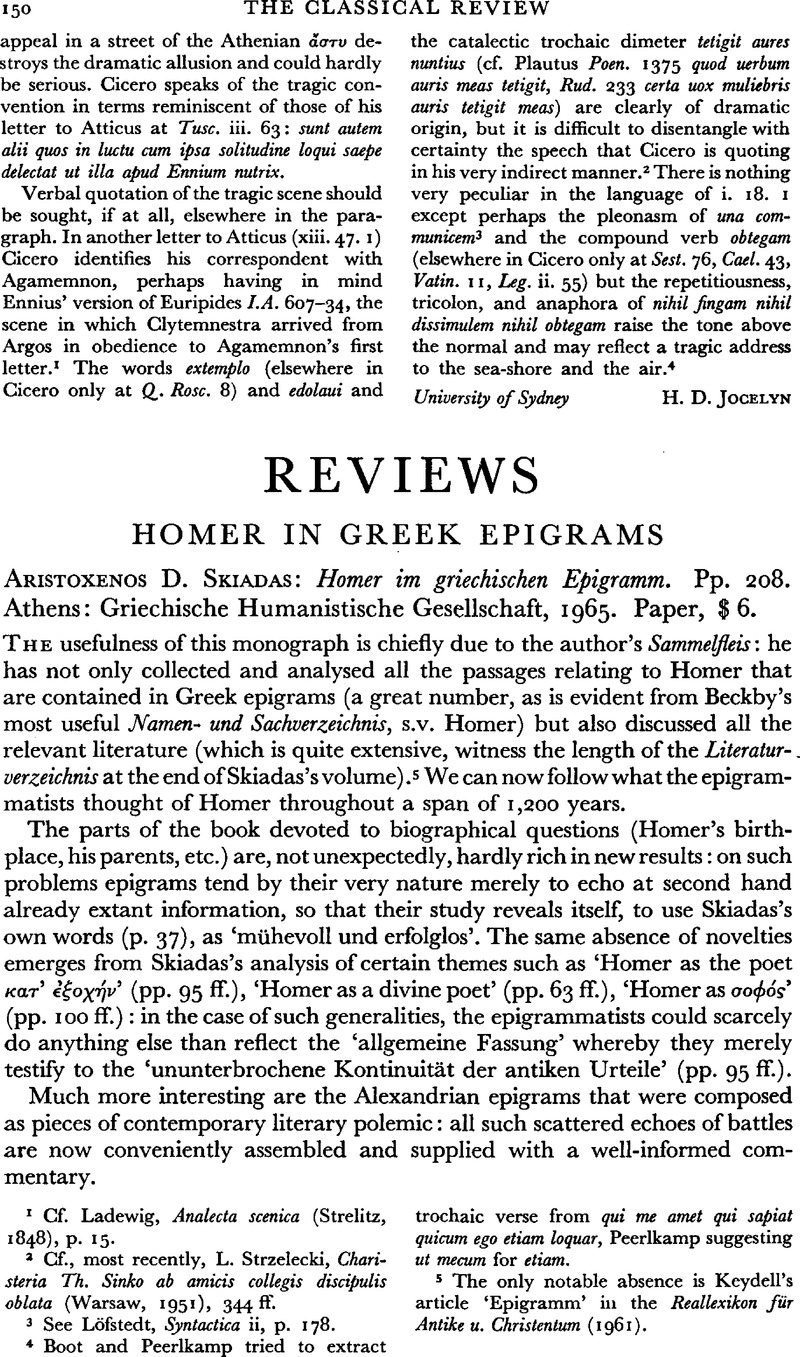No CrossRef data available.
Article contents
Homer in Greek Epigrams - Aristoxenos D. Skiadas: Homer im griechischen Epigramm. Pp. 208. Athens: Griechische Humanistische Gesellschaft, 1965. Paper, $ 6.
Published online by Cambridge University Press: 27 February 2009
Abstract

- Type
- Reviews
- Information
- Copyright
- Copyright © The Classical Association 1966
References
page 150 note 5 The only notable absence is Keydell's article ‘Epigramm’ in the Reallexikon für Antike u. Christentum (1961).
page 151 note 1 In other words: both A.P. ix. 572. 4 (where Ὁμηρε⋯ῳ στ⋯ματι, ‘Homers Mund’, puzzles Skiadas, cf. p. 85) and A.P. ix. 26. 3 (where the usual circumlocution Ἀν⋯τηςστ⋯μα is, as I have tried to show, explained by the θ⋯λυν Ὅμηρον that follows) support each other in being best understood as echoes of the same topos (‘Homer's mouth’ [or any exceptionally great poet's mouth: cf., in Latin writers, os Pindari, quoted by Jacobs, ad loc., Animadv. ii. 1 = viii, pp. 303 f.] as opposed to the usual circumlocutions ‘Μουσ⋯ων στ⋯μα’, ‘Μο⋯σης στ⋯μα’).


